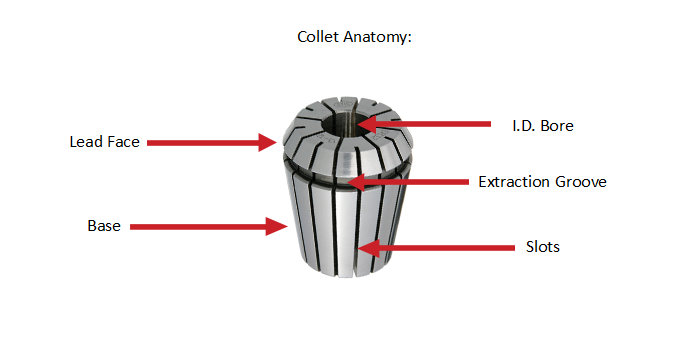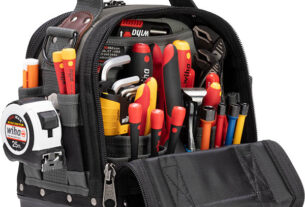Spot facing is a critical process in machining, which requires the use of specialized tools. Among these tools, the spot facing tool stands out as an essential component in achieving precision and accuracy in machining operations. In this article, we will delve into what spot facing is, how it is done, and why you need a spot facing tool. We will also discuss the benefits of using this tool and provide some tips on how to maintain it.
What is Spot Facing?
Spot facing refers to the process of machining a flat surface on a circular hole or boss. This process is typically done to create a smooth surface for mating with another part or component. The result is a clean and precise contact surface that ensures optimal performance of the machinery.
Spot facing can be achieved through various methods, including milling, drilling, reaming, and boring. However, using a dedicated spot facing tool is the most efficient and effective method for achieving accurate results.
Why Use a Spot Facing Tool?
Using a specialized tool like the spot facing tool offers several advantages over traditional machining methods. Here are some of the benefits of using this tool:
1. Improved Accuracy
A dedicated spot facing tool helps you achieve maximum accuracy when machining flat surfaces on circular holes or bosses. Unlike other techniques like milling or drilling, which may produce uneven surfaces due to vibrations or improper alignment, using a spot facing tool ensures that you get perfectly flat surfaces every time.
2. Increased Efficiency
With its unique design and cutting geometry, a spot facing tool can machine flat surfaces much faster than other methods. This efficiency translates to reduced cycle times and increased productivity.
3. Reduced Tool Wear
When you use traditional machining methods like milling or drilling for spot facing operations, the cutting edges of your tools tend to wear out quickly due to excessive heat buildup. Using a specially designed spot facing tool eliminates this problem, allowing you to achieve optimal tool life and reduce operating costs.
4. Improved Surface Finish
The use of a spot facing tool ensures that you get a smooth and uniform surface finish every time. This is essential when machining parts that need to mate precisely with other components, as it reduces the chances of leakage or failure due to poor sealing.
Types of Spot Facing Tools
There are several types of spot facing tools available in the market today. Each type has its unique features and benefits, depending on the application requirements. Here are some of the most common types:
1. Single-Fluted Spot Facers
Single-fluted spot facers are among the most popular types of spot facing tools. They are designed to machine flat surfaces on circular holes or bosses with diameters ranging from 3mm to 80mm. These tools have a single cutting edge and require minimal axial force, making them easy to use even in tight spaces.
2. Multi-Fluted Spot Facers
Multi-fluted spot facers are similar to single-fluted ones but have multiple cutting edges for increased efficiency and reduced cycle times. These tools are ideal for machining larger diameter holes or bosses where speed and accuracy are critical.
3. Adjustable Spot Facers
Adjustable spot facers are versatile tools that allow you to machine flat surfaces on circular holes or bosses with different diameters using a single tool. These tools come with adjustable blades that can be set to match the diameter of your workpiece, providing maximum flexibility and convenience.
4. Piloted Spot Facers
Piloted spot facers are designed to ensure precise alignment when machining flat surfaces on circular holes or bosses. These tools come with a pilot that fits snugly into the hole or boss, guiding the tool during machining operations and ensuring optimal accuracy.
How to Use a Spot Facing Tool
Using a spot facing tool requires proper setup and operation techniques to achieve optimal results. Here’s how to use this tool:
1. Prepare Your Workpiece
Before using a spot facing tool, you need to prepare your workpiece by drilling or boring the circular hole or boss to the required size and depth. Ensure that the surface is clean and free of any debris or contaminants.
2. Install the Spot Facing Tool
Select the appropriate spot facing tool for your application and install it in your machine’s spindle or chuck. Ensure that the tool is securely fastened and properly aligned with your workpiece.
3. Set Your Machining Parameters
Set your machining parameters, including cutting speed, feed rate, and depth of cut, based on the material being machined and the type of spot facing tool being used. Consult your tool supplier or manufacturer for recommended parameters.
4. Perform Spot Facing Operations
Start the machining process by engaging the spot facing tool with your workpiece using the appropriate feed rate and cutting speed. Ensure that the tool is cutting evenly and smoothly, and adjust your machining parameters as necessary to achieve optimal results.
5. Inspect Your Workpiece
After completing your spot facing operations, inspect your workpiece for any defects or imperfections. If necessary, perform additional finishing operations like deburring or polishing to ensure optimal performance.
Maintenance Tips for Spot Facing Tools
To ensure optimal performance and longevity of your spot facing tools, follow these maintenance tips:
1. Clean Your Tools Regularly
Regularly clean your spot facing tools after use to remove any chips or debris that may have accumulated during machining operations. Use a soft brush or compressed air to remove any dirt or contaminants from the tool’s surfaces.
2. Lubricate Your Tools
Lubricate your spot facing tools regularly to reduce friction and wear on their cutting edges. Apply a few drops of cutting oil or coolant to the tool’s surfaces before use.
3. Check Your Tools for Wear
Regularly inspect your spot facing tools for signs of wear or damage. Look for any chips, cracks, or uneven wear patterns on the cutting edges and replace the tool if necessary.
4. Store Your Tools Properly
Store your spot facing tools in a clean, dry place when not in use to prevent rust and contamination. Use protective covers or cases to keep them safe from damage during transportation or storage.
Conclusion
Spot facing is an essential process in machining that requires specialized tools like the spot facing tool. Using this tool offers several benefits, including improved accuracy, increased efficiency, reduced tool wear, and improved surface finish. There are several types of spot facing tools available in the market today, each with its unique features and benefits. To ensure optimal performance and longevity of your spot facing tools, follow proper maintenance techniques like cleaning regularly, lubricating, checking for wear, and storing properly.
References:
1. “Spot Facing.” Wikipedia, Wikimedia Foundation, 22 June 2021, en.wikipedia.org/wiki/Spot_facing.
2. “Single Flute Spot Facers.” Harvey Tool – Single Flute Spot Facers, www.harveytool.com/products/cutters/spot-facers/single-flute-spot-facers/.
3. “Adjustable Diameter Spot Facers.” Sumitomo Electric Carbide – Adjustable Diameter Spot Facers | SUMITOMO ELECTRIC CARBIDE INC., www.sumicarbide.com/en-us/products/milling/tools/spotfacer/adjustable-diameter-spot-facers.html.
4. “Piloted Spot Facers.” MSC Industrial Supply Co. – Piloted Spotting Drills & Counterbores: Drill Bits – MSC Industrial Supply Co., www.mscdirect.com/browse/tn/Precision-Tools/Solid-Cutting-Tools/Drill-Bits/Piloted-Spotting-Drills-Counterbores?searchterm=piloted+spot+facer&navid=12106536.
5. “Spot Facing.” Sandvik Coromant – Manufacturing Tools & Machining Solutions, www.sandvik.coromant.com/en-gb/products/spot-facing/pages/default.aspx.




